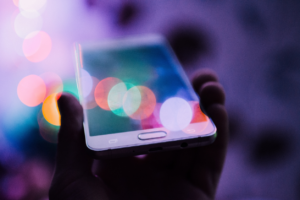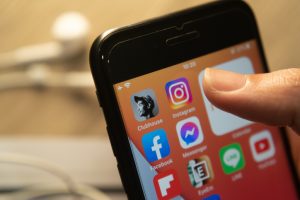The cautionary PR lessons from Threads’ meteoric launch — and decline
The initial buzz was intense. But things have already changed drastically.

The Threads hype was inescapable just a month ago. It was the fastest growing social media app ever, notching 100 million signups in just a week.
That’s more than the population of Vietnam.
But now the number of daily active users has fallen 79%, to an estimated 10 million people a day logging on to scroll the app for an average of just three minutes, ZDNet reported.
While some brands have seen strong initial success, what happens when most of their everyday users leave and they’re just left talking to one another?
Some decline is to be expected after an initial sampling. But a tumble that dramatic bears closer scrutiny — and can teach us some tough PR lessons.
A great launch isn’t everything.
Often as PR professionals, we’re called to make a splash when a new product enters the market. And often we do a great job, as Threads did. The product was pushed into the market at an advantageous moment, after its great rival Twitter (now known as X) had a terrible weekend. It immediately garnered had tons of positive press about how it was the Twitter killer to end all Twitter killers. Users spiked, thanks in part to the frictionless sign-up process Instagram facilitated and an impressive sense of FOMO. It was the biggest app launch ever. The media flocked to cover it (including us).
And then within a month, it all ebbed away.
You can do everything right with the launch and still not meet business goals. In part, that’s because …
Inertia is strong.
To be a Twitter killer, you have to get people to stop using Twitter, an app that has been around for more than 17 years. No matter its problems over the last year, it’s still become a deeply ingrained habit. For some of us addicts, including crucial audiences like journalists and celebrities, it’s the first thing we check each morning, the place we turn to dash off random thoughts and follow news events in real-time.
People have spent years curating their timelines to follow the best, most interesting people who fit their exact niche interests. Others have poured countless hours into building huge followings. Threads tried to help ease people onto a new app by making it easy for people who follow you on Instagram to do the same on Threads, or to suggest popular accounts for you to follow.
But people who are popular on Instagram may not be the same as those who thrive on Twitter. The former app relies heavily on aesthetics and photography, while the latter values pithy writers and real-time interaction. It isn’t as plug-and-play as it might initially seem.
Ultimately, there is a time investment that people have put into Twitter that holds value, despite the app’s erratic leadership.
And Threads hasn’t yet given either content creators or consumers enough reasons to put in the time to rebuild their feeds and followings.
Sell what you are, not what you aren’t.
Threads’ value proposition at launch was clear: We’re like Twitter, but not owned by Elon Musk.
And that … was basically it.
Yes, Threads has a few dashes of Instagram in it, largely in its iconography. It gives you a few more characters to play with than a free Twitter account does. But the functionality is basically the same.
But Instagram CEO Adam Mosseri, who also leads Threads, has said that their goal is not to replace Twitter.
“The goal is to create a public square for communities on Instagram that never really embraced Twitter and for communities on Twitter (and other platforms) that are interested in a less angry place for conversations, but not all of Twitter,” he posted on Threads shortly after launch. He specifically said they did not intend to court the politics and hard news verticals that so define Twitter, while acknowledging that those things are absolutely going to exist on Threads.
In other words, the platform has replicated Twitter’s functionality but want different people to use it in “less angry” ways without really providing insight into what that looks like.
Threads has done a stellar job of defining what it isn’t. It isn’t Twitter, it isn’t for news, isn’t angry.
But what is it for?
In the absence of a clear narrative, the media has run with the “Twitter killer” storyline. And the app simply isn’t Twitter, for better and for worse.
But until we know what it is, there’s no compelling reason to spend our time there instead of on TikTok, Instagram or even back on Twitter.
PR will take you a long way — but the product has to back it up.
This all leads us to one of the hardest truths about public relations: We can be so good at our jobs. We can get all the buzz and all the hype and all the ink in the world.
But if audiences ultimately don’t find value in the products we’re promoting, it doesn’t matter.
To some extent, Threads is even a victim of its own PR success. Bolstered by its huge parent company, it skyrocketed to initial success so fast that it really had nowhere to go but down.
Threads may eventually carve out a niche for itself — not as a Twitter slayer, but as a valuable tool in its own right. It takes time to grow loyalty and time for users to discover unique ways of building community. But at the moment, the product and vision isn’t living up to the splashy debut.
Allison Carter is executive editor of PR Daily. Follow her on Twitter or LinkedIn.







